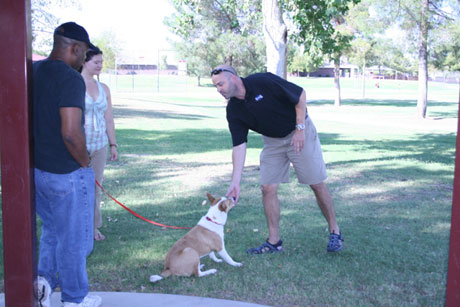Dog training can help foster good behavior in a pup and open up a world of opportunities for a pet parent and their dog, especially in social settings. As a plus, it’s easier to control a trained dog than an errant and untrained canine.
If you feel that your pup requires dog training in Chico, we can offer you a hand. But perhaps the question lingering in mind relates to finding the best way to train your dog. Reasons why there’s no definitive answer to this query.
Training Needs Vary
The choice of training method should consider your dog’s need for training. For instance, do you need to encourage a dog to learn a new behavior or discourage a bad behavior? Are you after obedience training or leash training?
What’s the purpose of the training? Are you after behavioral, retrieving, tracking, agility, or protection training? Have you considered underlying concerns that could affect training? With all these factors in mind, it’s apparent that a specific method might work to encourage a particular behavior but fail in other areas.
Still, a rescue dog would have different training needs from a pup in a stable and loving home environment. What’s the implication of all these factors?
In my informed opinion, there’s no particular best way to train a dog. I believe that a multi-pronged and balanced approach that involves adopting a variety of methods is the best way to meet training objectives for your pup.
Perhaps we can rephrase the question by asking about some of the best training methods for a dog. Let’s have a look at a few approaches to underscore my point.
- Positive Reinforcement
Remember how excited you became whenever your parents bought you ice cream as a kid or other treats as a reward for your good behavior? It made you want to stay in their good books, right? Well, that’s how positive reinforcement works.
A trainer can encourage the desired actions by rewarding or acknowledging a dog’s good behavior. A reward could be anything that tickles a dog’s mind. A trainer can reward desired behavior in a pup using the following:
- Verbal praise
- Treats
- Toys
- Interactive play
- Petting
But remember, timing is vital in the use of positive reinforcement. The reward for the desired action should be immediate. That way, a pup learns to create an association between their action and the reward.
The trainer also uses short verbal cues (commands) relating to a specific action. Words such as go, come, sit are often used as commands; the idea is to keep it simple because dogs don’t have the mental acuity to grasp sentences.
Your family members also need to use similar verbal cues consistently to avoid confusion. Pet owners should also endeavor to reward positive behavior and not undesired actions.
If you use treats as a reward, keep them small. You don’t want a full dog when they’re learning. Positive reinforcement is the ideal approach to help your pup learn basic commands, though it takes time and patience.
- Mirror Training
Monkey see monkey do! Do you know that kids learn by observing and copying their parents? Interestingly, dogs are like little kids: they’ll mirror the behavior they see in a trainer or owner, thereby mimicking their actions.
A mirror training approach uses at least three participants: trainer, another individual(model), and dog. The dog plays the role of a casual observer as the trainee. Meanwhile, the trainer gives commands to the model and praises them every time they perform a task. The trainer might also withhold a reward for unwanted behavior.
Without a shadow of a doubt, the dog gets the hang of it. The model might also serve as a rival, competing with the dog to accomplish a task to receive a reward. In so doing, the model encourages a tail-wagger to accomplish a task quickly, which fosters learning.
This training method works in an almost similar fashion as favorable reinforcement. It’s also a natural approach in that it taps into a dog’s instincts, allowing a pup to operate in a social environment and learn by example.
What’s more, mirror training can help enhance the bond you have with your dog. If you’re after an approach that allows you to play an active role in your pup’s training, mirror training is worth your consideration.
The training approaches we’ve examined are ideal for fostering your pup’s good behavior. Their individualized nature can also help enhance the relationship between you and your dog. But does that make them the best ways to train your dog? Probably not.
It would help if you had in mind that a dog’s undesired behavior could result from underlying issues. On that note, one training approach may not be sufficient to unearth such issues. Thus, by combining multiple training methods (some of which we can discuss in another sitting, perhaps), you can realize tenable training results that address all of your dog’s needs.























